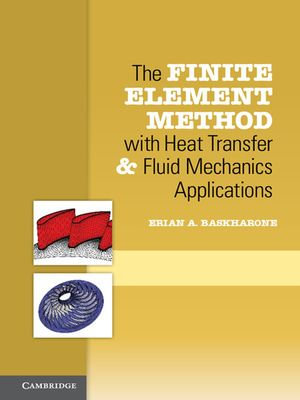
eTEXT
The Finite Element Method with Heat Transfer and Fluid Mechanics Applications
eText | 16 September 2013 | Edition Number 1
At a Glance
eText
$131.95
or
Instant online reading in your Booktopia eTextbook Library *
Read online on
Desktop
Tablet
Mobile
Not downloadable to your eReader or an app
Why choose an eTextbook?
Instant Access *
Purchase and read your book immediately
Read Aloud
Listen and follow along as Bookshelf reads to you
Study Tools
Built-in study tools like highlights and more
* eTextbooks are not downloadable to your eReader or an app and can be accessed via web browsers only. You must be connected to the internet and have no technical issues with your device or browser that could prevent the eTextbook from operating.
ISBN: 9781107461598
ISBN-10: 1107461596
Published: 16th September 2013
Format: ePUB
Language: English
Publisher: Cambridge University Press
Edition Number: 1
You Can Find This eBook In
This product is categorised by
- Non-FictionEngineering & TechnologyEnergy Technology & EngineeringHeat Transfer Processes
- Non-FictionEngineering & TechnologyMechanical Engineering & MaterialsMechanical Engineering
- Non-FictionEngineering & TechnologyMechanical Engineering & MaterialsMaterials ScienceMechanics of Fluids
- Non-FictionEngineering & TechnologyTechnology in GeneralMaths for Engineers
- Non-FictionSciencePhysicsClassical MathematicsFluid Mechanics
- Non-FictionEngineering & TechnologyIndustrial Chemistry & Manufacturing TechnologiesIndustrial ChemistryChemical Engineering
- Non-FictionMathematicsApplied Mathematics
- Non-FictionEngineering & TechnologyBiochemical Engineering























